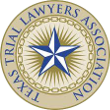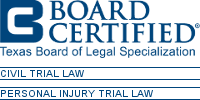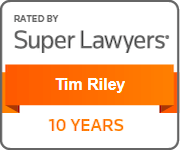1998 WL 598125
No Publication
NOTICE: NOT DESIGNATED FOR PUBLICATION. UNDER TEX.R.APP.P. 47.7 UNPUBLISHED OPINIONS MAY NOT BE CITED AS AUTHORITY.
Court of Appeals of Texas, Austin.
THE HARTFORD ACCIDENT & INDEMNITY COMPANY, Appellant,
v.
TEXAS HOSPITAL INSURANCE EXCHANGE; Davis & Davis, P.C.; and C. Dean Davis,
Appellees.
No. 03-97-00562-CV.
Sept. 11, 1998.
FROM THE DISTRICT COURT OF TRAVIS COUNTY, 53RD JUDICIAL DISTRICT NO. 91-2726, HONORABLE W. JEANNE MEURER, JUDGE PRESIDING.
Before Chief Justice YEAKEL, Justices ABOUSSIE and JONES.
MARILYN ABOUSSIE, Justice
*1 Appellant, the Hartford Accident Indemnity Company (“Hartford”) appeals a summary judgment rendered in favor of appellees, Texas Hospital Insurance Exchange (“THIE”), the law firm of Davis & Davis, P.C., (“Davis & Davis”) and C. Dean Davis. [FN1] Following the birth of a seriously injured child, the mother filed a medical malpractice suit against Methodist Hospital Health Care Systems, Inc. (“Methodist”), among others. [FN2] THIE, as Methodist’s primary insurer, retained Davis & Davis as defense counsel. After a hearing regarding discovery abuses by defendants, the trial court ordered “death penalty” sanctions which, in addition to other punishment, struck all of Methodist’s pleadings. Subsequently, Hartford, the excess insurer of Methodist, chose to settle the Harris suit instead of appealing the sanctions order. Proceeding as Methodist’s subrogee, Hartford then brought suit against THIE and Davis & Davis, contending that appellees’ negligent failure to settle the Harris case and negligent handling of Methodist’s defense in the Harris case forced Hartford to contribute $5.5 million to the Harris settlement. THIE and Davis & Davis moved for summary judgment. Without specifying its reasons, the trial court granted appellees’ motions. Hartford now appeals in fourteen points of error. We will affirm.
FN1. We will refer to THIE, Davis & Davis, and C. Dean Davis collectively as “appellees.” All references to Davis & Davis include reference to C. Dean Davis.
FN2. According to the Plaintiff’s Third Amended Original Petition, the medical malpractice suit was styled Kathy Harris Rufus, Individually And As Parent And Next Friend Of Dedrick Harris, A Minor v. Peter McKinney; Nan Travis Memorial Hospital; The Methodist Hospital Health Care System. Inc., A/K/A The Methodist Health Care Network, Inc.; And The Methodist Hospital System, Inc. For convenience, we will refer to this suit as the “Harris case.”
STATEMENT OF FACTS
The Underlying Suit: The Harris Case
Dedrick Harris was born at Nan Travis Memorial Hospital (“Nan Travis”), a hospital managed by Methodist, on April 20, 1982. Dedrick was a gravely injured child who suffered from severe cerebral palsy, mental retardation, and quadriplegia. He required custodial and medical care for his entire life, which was estimated to be the normal life expectancy. In 1987, Dedrick’s mother filed a medical malpractice suit against Nan Travis in Dallas County, alleging that Dedrick’s injuries were caused by, among other things, the negligence of Nan Travis during his birth. Ms. Harris also sought recovery for her bystander injuries.
THIE had issued Nan Travis an insurance policy that covered medical malpractice claims, such as those asserted in the Harris case, in May 1981. The policy afforded up to $1 million for each claim and $3 million aggregate. Under the policy, THIE had the right to investigate all claims and the ability to settle any claim or suit, with the written consent of Nan Travis. THIE also had a duty to defend Nan Travis against any suit seeking damages. Accordingly, THIE retained Davis & Davis to defend Nan Travis in the Harris case.
While the Harris plaintiffs had developed evidence that Nan Travis was negligent in failing to have properly trained staff, appropriate working equipment, and appropriate policies and procedures for the delivery of babies, proximate cause remained a hotly contested issue between the parties. Defense witnesses stated that Dedrick’s injuries indicated that his condition developed during gestation and were not a result of the birthing process, because he had only brain damage but no kidney or other vital organ deterioration. The Harris plaintiffs’ expert, however, believed that Dedrick’s brain damage was due to asphyxia that occurred during labor and delivery. As a lawyer with Davis & Davis wrote in a report to a THIE employee, “No one can prove that this child was injured by the birth process as well as not injured by the birth process.”
*2 Despite their expert’s calculations that Dedrick’s damages ranged from $11.5 million to $14 million, the Harris plaintiffs were willing to settle for a greatly reduced sum because of the uncertain proximate cause issue. In October 1988, the Harris plaintiffs sent an unconditional settlement demand letter to THIE offering to settle for one million dollars in exchange for a full release of Nan Travis. Although the requested amount was within THIE’s policy limit covering Nan Travis, THIE declined to accept the proposed settlement and countered with a $100,000 settlement offer. While the settlement letter stated the offer was only open through November 30, 1988, the record indicates that the Harris plaintiffs would have accepted the amount they demanded until the first part of January 1989, at which time they learned of Methodist’s involvement with Nan Travis.
On February 10, 1989, the Harris plaintiffs added Methodist as a defendant in the case. The Harris plaintiffs alleged that Methodist was negligent in failing to supervise the employment of Nan Travis personnel, including the nurses in the obstetrical section, pursuant to a Management Contract between Methodist and Nan Travis. Whereas Nan Travis had only primary insurance coverage, Methodist had both primary and excess coverage. Methodist had primary coverage as an additional insured under Nan Travis’s policy with THIE. Consequently, THIE also retained Davis & Davis to defend Methodist in the Harris case. In addition, in March 1982, Hartford had issued Methodist two excess coverage policies totaling $15 million. These Hartford policies did not cover Nan Travis, but only provided coverage to Methodist. With the addition of Methodist, the Harris plaintiffs’ assessment of the value of the case increased to $2 million or $3 million. The record does not reflect, however, that the Harris plaintiffs actually submitted an additional settlement demand letter after Methodist had been joined. In April 1989, THIE increased its settlement offer to $500,000.
Because of discovery disputes, the Harris plaintiffs moved for sanctions against appellees in June 1989. As grounds for the alleged discovery abuse, the Harris plaintiffs cited incomplete production of a nurse’s personnel file, misleading and untimely production of proof of insurance coverage, and bad faith production of answers to interrogatories and requests for production of documents. Specifically, the Harris plaintiffs’ motion for sanctions accused appellees of purging approximately three-fourths of nurse Janie Bell Gibson’s personnel file. The Harris plaintiffs averred that detailed complaints against Gibson, whom they described as a key figure in proving the negligence of appellees, and incident reports concerning her gross misbehavior were removed from her file. The Harris plaintiffs’ second ground involved appellees’ misrepresentations of the amount of insurance coverage available under the policies of Nan Travis and Methodist. The Harris plaintiffs charged appellees with submitting a false response to an interrogatory in which they stated they had only a one million dollar insurance policy that might cover them. Additionally, they alleged that an attorney with Davis & Davis represented to them that one million dollars was the total coverage under THIE’s policy, but due to settlement of other claims, only $500,000 remained to settle the Harris case. As final grounds for sanctions, the Harris plaintiffs claimed appellees would not produce certain documents related to management of the hospital.
*3 After a two-day hearing in Dallas in July 1989, District Judge Candace Tyson imposed sanctions against the Harris defendants. The sanctions order taxed Nan Travis and Methodist each $50,000, struck all defenses of Nan Travis and Methodist, and ordered trial to commence solely on the issue of damages. After the imposition of sanctions, which removed the issue of proximate cause, the settlement demand of the Harris plaintiffs increased to $13 million. Methodist participated in the filing of petitions seeking writ of mandamus against Judge Tyson to both the Fifth District Court of Appeals and the Texas Supreme Court. Both courts declined to issue the writs. Rather than proceeding with trial and appealing the sanctions order, the parties settled. THIE paid $2 million, and Hartford contributed $5.5 million dollars to the settlement on behalf of Methodist. Thereafter, Hartford brought this suit against appellees.
The Present Controversy
Hartford initially filed suit against appellees in July 1990. Hartford asserts that Davis & Davis committed legal malpractice in its handling of the Harris case. Although Hartford lists seventeen grounds demonstrating its malpractice claim, the crux of Hartford’s complaint is that Davis & Davis’ negligent conduct caused the imposition of sanctions, which forced Hartford to contribute $5.5 million to the settlement. Hartford accuses THIE of negligently failing to settle the Harris case, both before and after Methodist was made a party to the suit, and of negligently handling Methodist’s defense.
Appellees initially moved for summary judgment on the basis that they did not negligently fail to settle the Harris suit. Appellees argued that the Harris plaintiffs’ only offer to settle within THIE’s policy limits came before Methodist was joined as a party, and, after Methodist was joined, the settlement demand far exceeded the policy limit. Under both circumstances, they contend they did not owe Methodist a duty to settle. Not owing a duty to Methodist to settle, appellees took the position that they owed no duty to Methodist’s subrogee, Hartford. Davis & Davis argued additionally that THIE retained all control over the authority to settle. On March 3, 1997, the trial court denied the motion as to THIE but granted it as to Davis & Davis without specifying its reasons. Appellees again moved for summary judgment on April 26, 1997. THIE urged the trial court to reconsider its previously denied motion regarding the failure to settle claim. Additionally, appellees argued that Hartford could not recover under its theory that appellees’ negligently handled Methodist’s defense. Appellees urged that Hartford could not establish causation or damages. Without specifying the grounds, the trial court granted both of appellees’ motions, thereby disposing of the entire case in favor of appellees on July 21, 1997. Consequently, Hartford now appeals, bringing fourteen points of error.
STANDARD OF REVIEW
*4 A summary judgment is proper only when a movant establishes that there is no genuine issue of material fact and that it is entitled to judgment as a matter of law. See Tex.R. Civ. P. 166a. In deciding whether a disputed material fact issue precluding summary judgment exists, evidence favorable to the nonmovant will be taken as true. See Nixon v. Mr. Property Management Co., 690 S.W.2d 546, 548-49 (Tex.1985). Every reasonable inference must be indulged in favor of the nonmovant, and any doubts resolved in its favor. See id. To prevail on summary judgment, a defendant must disprove at least one essential element of each of plaintiff’s causes of action, or it must conclusively establish one or more of its defenses. See Friendswood Dev. Co. v. McDade, 926 S.W.2d 280, 282 (Tex.1996).
A motion for summary judgment must expressly state the grounds upon which it is made and will stand or fall on those grounds alone. See McConnell v. Southside Indep. Sch. Dist., 858 S.W.2d 337, 339 (Tex.1993). Summary judgments may not be affirmed or reversed on grounds not expressly set forth in the motions presented to the trial court. See City of Houston v. Clear Creek Basin Auth., 589 S.W.2d 671, 677 (Tex.1979). Where, as here, a trial court’s order granting summary judgment does not specify the basis for the ruling, the nonmovant must defeat each summary judgment ground urged by the movant. See Carr v. Brasher, 776 S.W.2d 567, 569 (Tex.1989). Otherwise, the appellate court must uphold the summary judgment if any of the theories advanced are meritorious. Id.
DISCUSSION
Negligent Failure to Settle
Hartford claims in its first point of error that the trial court erred in granting THIE summary judgment because material fact issues exist as to whether THIE was negligent or in breach of its contract with Methodist in failing to settle the Harris case for a sum within THIE’s policy limit. Under Texas law, an insurer responding to settlement demands within policy limits must exercise that degree of care and diligence which an ordinarily prudent person would exercise in the management of the person’s own business. See Texas Farmers Ins. Co. v. Soriano, 881 S.W.2d 312, 314 (Tex.1994); American Physicians Ins. Exch. v. Garcia, 876 S.W.2d 842, 848 (Tex.1994). Accordingly, an insurer may be liable for negligently failing to settle claims made within policy limits against an insured. See G.A. Stowers Furniture Co. v. American Indem. Co., 15 S.W.2d 544, 547-48 (Tex. Comm’n App.1929, holding approved). To impose a Stowers duty on an insurer, a settlement demand must propose a full release of the insured in exchange for a stated sum of money. See American Physicians, 876 S.W.2d at 848-49. The Stowers duty is not activated by a settlement demand unless three prerequisites are met: (1) the claim against the insured is within the scope of coverage; (2) there is a demand within policy limits; and (3) the terms of the demand are such that an ordinarily prudent insurer would accept it, considering the likelihood and degree of the insured’s potential exposure to an excess judgment. See American Physicians, 876 S.W.2d at 849.
*5 Hartford claims that THIE breached its duty to settle on Methodist’s behalf both before and after Methodist was joined. Before Methodist was made a party, Hartford claims that the Harris plaintiffs would have accepted a one million dollar settlement, an amount within THIE’s policy covering Nan Travis. Because Methodist was also an insured of THIE, and since THIE knew of the potential risk to Methodist arising from Methodist’s relationship with Nan Travis, Hartford contends THIE should have accepted the Harris plaintiffs’ settlement offer to Nan Travis and owed Methodist the duty to do so. Hartford argues that had the Harris lawsuit settled before any evidence implicating Methodist developed, the Harris plaintiffs would have executed a general release that would have protected Methodist against further claims. To support this contention, Hartford introduced affidavit testimony from the attorney for the Harris plaintiffs that the Harris plaintiffs probably would have released Methodist from liability, even before Methodist had been joined, if THIE would have settled the claim against Nan Travis for one million dollars. Consequently, Hartford, as the excess insurer, never would ha™ºad any financial obligation and would not have been required to pay the $5.5 million in settlement monies. Furthermore, Hartford alleges that once Methodist was joined as a party, THIE was again negligent for failing to settle the suit before the sanctions hearing in June 1989.
THIE contends in its summary judgment motion and on appeal that any Stowers duty it owed to Methodist was never triggered at any time during the proceedings. We agree. The summary judgment proof establishes that, before Methodist was joined, the Harris plaintiffs made a settlement demand for one million dollars, an amount within the limits of THIE’s policy, but that the settlement demand proposed to release only Nan Travis. Even assuming THIE could owe a Stowers duty to an insured who is not a party to a pending lawsuit but merely a potential target, this duty was not activated in this instance because THIE did not receive a demand to settle within policy limits in exchange for a full release of its insured, Methodist. [FN3] See American Physicians, 876 S.W.2d at 848-49. We decline to hold that affidavit testimony, given in hindsight, that the Harris plaintiffs probably would have released Methodist if THIE had settled with Nan Travis for one million dollars satisfies the requirements of the Stowers threshold. Further, the fact that the Harris plaintiffs’ letter proposed to release Nan Travis is of no consequence to Hartford’s present claim because Nan Travis was not Hartford’s insured. Hartford is only subrogated to Methodist’s causes of action against THIE. Thus, THIE did not negligently fail to settle before Methodist was joined.
FN3. We decline to comment on the feasibility of successfully maintaining a Stowers lawsuit on behalf of an insured who was not a party to the suit at the time of the alleged breach because, under these circumstances, THIE’s Stowers duty never arose.
The Harris plaintiffs’ one million dollar settlement demand letter was set to expire November 30, 1988. While there is summary judgment proof that the Harris plaintiffs would have accepted one million dollars until January 1989, Methodist was not joined until February 1989. After Methodist was joined, the summary judgment proof does not reflect that the Harris plaintiffs made an additional settlement demand within THIE’s policy limits covering Nan Travis and Methodist that proposed a full release of Methodist. Although Hartford has introduced affidavit testimony that the Harris plaintiffs might have been willing to settle for $2 million, a figure within THIE’s policy covering Nan Travis and Methodist, THIE was under no obligation to make or solicit settlement proposals. See American Physicians, 876 S.W.2d at 849. Further, this testimony is not the equivalent of a settlement demand letter. In the absence of a demand letter purporting to release Methodist fully in exchange for a sum of money within the policy limits, THIE’s Stowers’ duty to Methodist was not triggered.
*6 The supreme court has stated:
[T]he Stowers remedy of shifting the risk of an excess judgment onto the insurer is inappropriate absent proof that the insurer was presented with a reasonable opportunity to prevent the excess judgment by settling within the applicable policy limits.
American Physicians, 876 S.W.2d at 849. By establishing that the Harris plaintiffs never made a settlement demand within the policy limits against Methodist that proposed to fully release Methodist at any time during the proceedings, THIE has negated an essential element of Hartford’s Stowers claim. Consequently, THIE demonstrated its entitlement to summary judgment on this cause of action as a matter of law. See Friendswood, 926 S.W.2d at 282. We overrule Hartford’s first point of error.
In its second point of error, Hartford contends that material fact issues exist as to whether THIE was negligent for failing to notify Methodist of settlement offers in the Harris case. Apparently, Hartford is complaining that THIE did not notify Methodist of the Harris plaintiffs’ settlement offer of one million dollars made before Methodist was joined. [FN4] Citing American Physicians, Hartford claims the failure of an insurer to notify an insured of an offer within the limits of coverage can support a verdict for the plaintiff. In broadly discussing an insurance company’s duties to its insureds, the supreme court in American Physicians recognized its previous conclusion in Ranger County Mutual Insurance Co. v. Guin, 723 S.W.2d 656, 660 (Tex.1987), that an insurer’s failure to inform an insured of a settlement offer can support a jury’s finding of negligence. See American Physicians, 876 S.W.2d at 849. In addition to a number of factors distinguishing the facts in this cause from the cited authorities, we note particularly that in Ranger, the insured was a defendant in the action at the time the insurer received the settlement offer. See Ranger, 723 S.W.2d at 660. Here, Methodist was not a party to the cause when the Harris plaintiffs submitted their settlement demand letter. We decline to hold that THIE had a duty to notify Methodist of a settlement offer made in a pending lawsuit to which it was not a party and that expired before it became a party. Point of error two is overruled.
FN4. Hartford does not point to any settlement offers that were tendered after Methodist was joined.
Negligent Handling of Methodist’s Defense
In eleven of the remaining twelve points of error, Hartford describes appellees’ conduct which it claims amounts to negligent handling of Methodist’s defense. Points of error three, four, ten, and eleven complain that appellees were negligent for: participating in a false answer to an interrogatory; refusing to allow counsel other than Davis & Davis to represent Methodist; failing to timely advise Methodist and Hartford that it was more likely than not that a verdict in excess of the one million dollar limit of THIE’s coverage would be rendered if the Harris case were tried; and in assigning the Harris case to inexperienced counsel and not removing such counsel. Point of error five asserts that Davis & Davis’ negligent failure to settle, both before and after Methodist was joined and before sanctions were imposed, precluded Hartford from negotiating meaningfully. Point of error six avers that Davis & Davis negligently misrepresented THIE’s coverage of Nan Travis and Methodist. Points of error seven, eight, and nine accuse Davis & Davis of committing malpractice because Davis & Davis failed to prepare a witness for his deposition, failed to supervise discovery of Nurse Gibson’s personnel file, and failed to evaluate the Harris case and timely recommend that THIE pay one million dollars to settle. Point of error twelve claims material fact issues exist as to whether the negligent conduct outlined under the previous points of error proximately caused Hartford’s damages. Point of error thirteen claims that appellees’ negligent conduct and acts of malpractice raise material issues of fact as to whether each was a proximate cause of sanctions in the Harris case, whether such sanctions increased the value of the Harris case, and, if so, to what extent. Since these points of error are related, they will be discussed together. We will, however, begin our analysis with Hartford’s claim that Davis & Davis committed malpractice.
*7 Hartford takes the position that the negligent conduct of Davis & Davis led to the imposition of sanctions, and that the sanctions eliminated Methodist’s defenses and increased the settlement value of the case, thereby forcing Hartford to contribute more to the settlement than it otherwise would have paid on Methodist’s behalf. In other words, Hartford claims that, had the sanctions order not been rendered, Hartford would not have been required to pay $5.5 million in settlement monies. Davis & Davis contends that Hartford cannot prevail, as a matter of law, because Hartford chose to settle the Harris case, against the advice of Davis & Davis, rather than appeal the sanctions order. We agree with Davis & Davis and conclude that Hartford’s decision to settle the Harris case against Davis & Davis’ advice, in combination with Hartford’s refusal to appeal the sanctions order, precludes Hartford’s recovery for malpractice.
The uncontroverted summary judgment proof demonstrates that Hartford chose to settle the Harris case over Davis & Davis’ objections. In his affidavit attached to appellees’ motion for summary judgment, Bruce Anderson, an associate with Davis & Davis who acted as lead counsel for Nan Travis and Methodist at the sanctions hearing in the Harris case, testified that he advised the Harris defendants and their insurance companies not to settle but to appeal the sanctions order because he was very confident the sanctions order would be overturned on appeal. He further testified that despite his urgings, Hartford settled. On appeal, Hartford does not dispute the truth or challenge the credibility of Anderson’s affidavit, and it does not offer any controverting proof.
A client may sue an attorney for malpractice who advised settlement after the attorney’s negligence adversely impacted the underlying case. In Heath v. Herron, 732 S.W.2d 748 (Tex.App.–Houston [14th Dist.] 1987, writ denied), a client brought a legal malpractice action against an attorney whose failure to verify an answer resulted in the opposing party’s motion for instructed verdict and, ultimately, a settlement. The attorney charged with malpractice argued that the client’s decision to settle barred the malpractice suit. At trial, however, the client testified that the attorney told him the case was lost as a result of the pleading mistake, and, while trying the case and hoping for “different results on appeal” was an option, settling was “probably what [the client] should do.” See Heath, 732 S.W.2d at 750-51. Based on this advice, the client settled. The court held that the client’s decision to settle did not bar the subsequent malpractice action. Id. at 751.
In a case factually similar to the one at hand, an excess insurer brought suit against the law firm retained by the primary insurer for negligence in handling the defense of the underlying wrongful death case. See Stonewall Surplus Lines Ins. Co. v. Drabek, 835 S.W.2d 708 (Tex.App.–Corpus Christi 1992, writ denied). As in this case, during the course of the proceedings, the trial court rendered a sanctions order against the insureds for discovery abuses and, among other things, struck the insureds’ pleadings. After the sanctions order was imposed, the case settled, with the primary insurer contributing its policy limits and the excess insurer shouldering the majority of the settlement. The excess insurer alleged that the law firm’s negligence caused the trial court to strike the insureds’ pleadings and that such negligence proximately caused damage to the excess insurer. The trial court granted the law firm summary judgment, partially on the ground that the excess insurer had not appealed the sanctions order. The appellate court, however, reversed the trial court’s decision and remanded the case. In rejecting the law firm’s argument that the excess insurer had not suffered damage because it had failed to appeal the sanctions order, the appellate court stated that the real inquiry was whether the value of the underlying lawsuit changed because of the alleged negligence and sanctions order. The appellate court concluded that summary judgment was inappropriate because a material fact issue existed concerning any change in the settlement value of the case.
*8 Drabek is instructive for two reasons. First, the summary judgment proof established that the settlement offer, made after the imposition of sanctions, was based upon the evaluation and recommendation of the attorney charged with malpractice. Thus, the court was in essence holding that a client may sue an attorney for malpractice who urged settlement after the attorney’s malpractice harmed its legal position in the case. Second, the court rejected the law firm’s defense that the excess insurer could not sue for malpractice because it had not appealed the sanctions order. We believe that the court’s conclusion resulted from the fact that the attorney charged with malpractice was the one who recommended settling. Since the attorney recommended settling rather than appeal, the court logically rejected the attorney’s argument that the client could not prevail because the client had settled instead of exhausting its appellate remedies.
In contrast, Davis & Davis advised Hartford to appeal the sanctions order and not to settle the Harris case. Hartford’s refusal to appeal the sanctPace order and its decision to settle the Harris case is, therefore, crucial to our analysis. By electing to settle the case and refusing to appeal the sanctions order, Hartford effectively eliminated any opportunity Davis & Davis had to challenge the trial court’s ruling and disprove the charge that their actions caused harm to Hartford. Even if Davis & Davis’ conduct was a cause of the sanctions order, Hartford’s decision to settle prevented Davis & Davis from mitigating any damages Hartford might have sustained at trial. The impact the sanctions order might have had on the trial was rendered purely speculative by Hartford’s decision to settle.
Hartford’s additional decision not to appeal the sanctions order compounds the effect of the settlement. First, a successful appeal of the sanctions order would have restored Methodist’s defenses and possibly prevented any damage Hartford now claims because of the settlement. Second, despite Davis & Davis’ urgings, we cannot now review the propriety of the sanctions ruling because it was ordered in a cause in which a final judgment has been rendered in a separate proceeding. See Browning v. Placke, 698 S.W.2d 362 (Tex.1985) (final judgment is not subject to collateral attack unless the judgment complained of is void). Without an appeal of the sanctions order, Davis & Davis cannot demonstrate that its conduct, of which Hartford now complains, was not sanctionable or negligent. Moreover, Hartford’s election precludes Davis & Davis from demonstrating that the sanctions order was erroneous. The combination of these factors convinces us that Hartford’s decision to settle the case against the advice of Davis & Davis and refusal to appeal the sanctions order bars Hartford from prevailing on its malpractice claims against Davis & Davis.
Hartford also claims that THIE negligently handled Methodist’s claim, attempting to impute Davis & Davis’ alleged malpractice to THIE. We have held that Hartford cannot pursue a malpractice action against the law firm. On that basis alone, THIE is relieved from accountability. Even assuming, though, that Davis & Davis committed actionable malpractice, the Texas Supreme Court recently has held that “an insurer is not vicariously liable for the malpractice of an independent attorney it selects to defend an insured.” See State Farm Mut. Auto. Ins. Co. v. Traver, 41 Tex. Sup.Ct. J. 1343, 1343 (Aug. 25, 1998). Thus, as a matter of law, THIE cannot be liable for any malpractice committed by Davis & Davis in the course of Davis & Davis’ representation of Methodist.
*9 Points of error four and eleven possibly can be interpreted as claims that THIE was independently negligent in its handling of the Harris case. The fourth point of error asserts that THIE should not have hired Davis & Davis to represent Methodist as this raised a conflict of interest because Davis & Davis already was representing co-defendant Nan Travis. However, the Traver opinion appears to place the burden of declining and withdrawing from representation on the law firm, not the insurance company. The supreme court stated:
The lawyer must advise the insured of any conflicts that may arise between the insured’s interest and the carrier’s, and the lawyer may not proceed in the face of any conflicts unless he or she reasonably believes that the insured’s representation will not be materially affected and obtains the insured’s consent after full disclosure.
See Traver, 41 Tex. Sup.Ct. J. at 1344. The eleventh point of error complains that THIE was negligent by not removing the “inexperienced counsel” that Davis & Davis assigned to handle the “large and dangerous Harris case.” The decision of which staff to assign to the Harris case, though, was that of Davis & Davis. Thus, we do not believe that THIE can be independently liable for Davis & Davis’ decision, and under Traver, THIE cannot be liable for Davis & Davis’ assignment of counsel.
For the foregoing reasons, we overrule points of error three through thirteen. Based on our disposition, we need not consider Hartford’s fourteenth point of error concerning damages.
CONCLUSION
Having overruled all fourteen of Hartford’s points of error, we affirm the judgment of the trial court.
END OF DOCUMENT








